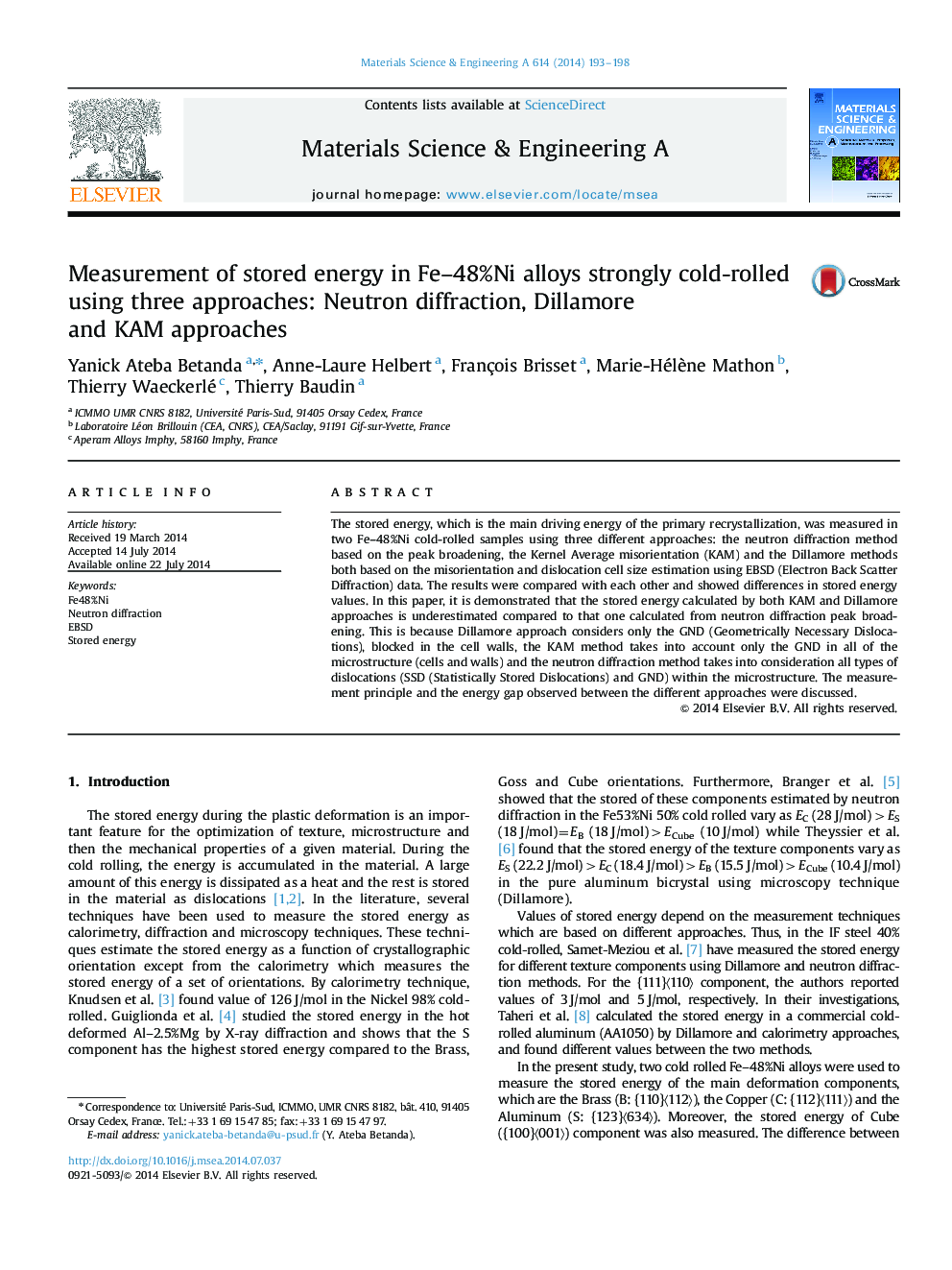| Article ID | Journal | Published Year | Pages | File Type |
|---|---|---|---|---|
| 1574861 | Materials Science and Engineering: A | 2014 | 6 Pages |
Abstract
The stored energy, which is the main driving energy of the primary recrystallization, was measured in two Fe-48%Ni cold-rolled samples using three different approaches: the neutron diffraction method based on the peak broadening, the Kernel Average misorientation (KAM) and the Dillamore methods both based on the misorientation and dislocation cell size estimation using EBSD (Electron Back Scatter Diffraction) data. The results were compared with each other and showed differences in stored energy values. In this paper, it is demonstrated that the stored energy calculated by both KAM and Dillamore approaches is underestimated compared to that one calculated from neutron diffraction peak broadening. This is because Dillamore approach considers only the GND (Geometrically Necessary Dislocations), blocked in the cell walls, the KAM method takes into account only the GND in all of the microstructure (cells and walls) and the neutron diffraction method takes into consideration all types of dislocations (SSD (Statistically Stored Dislocations) and GND) within the microstructure. The measurement principle and the energy gap observed between the different approaches were discussed.
Keywords
Related Topics
Physical Sciences and Engineering
Materials Science
Materials Science (General)
Authors
Yanick Ateba Betanda, Anne-Laure Helbert, François Brisset, Marie-Hélène Mathon, Thierry Waeckerlé, Thierry Baudin,
